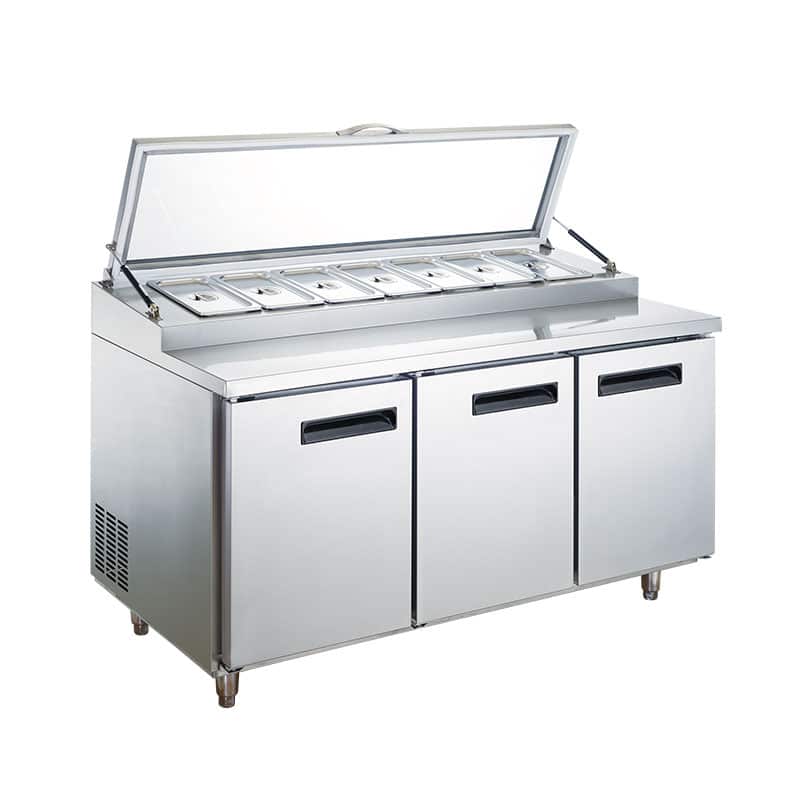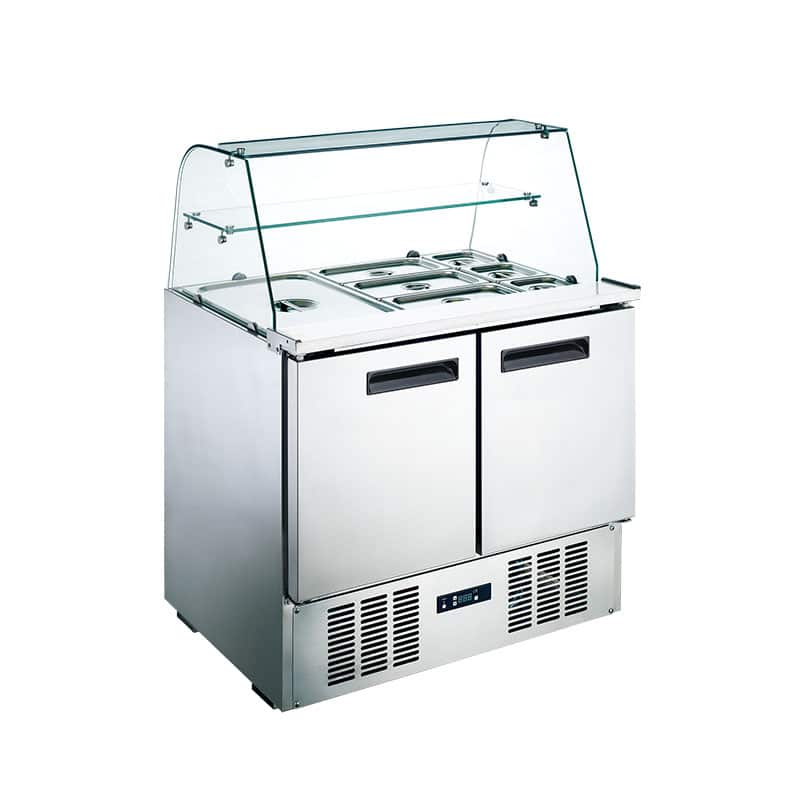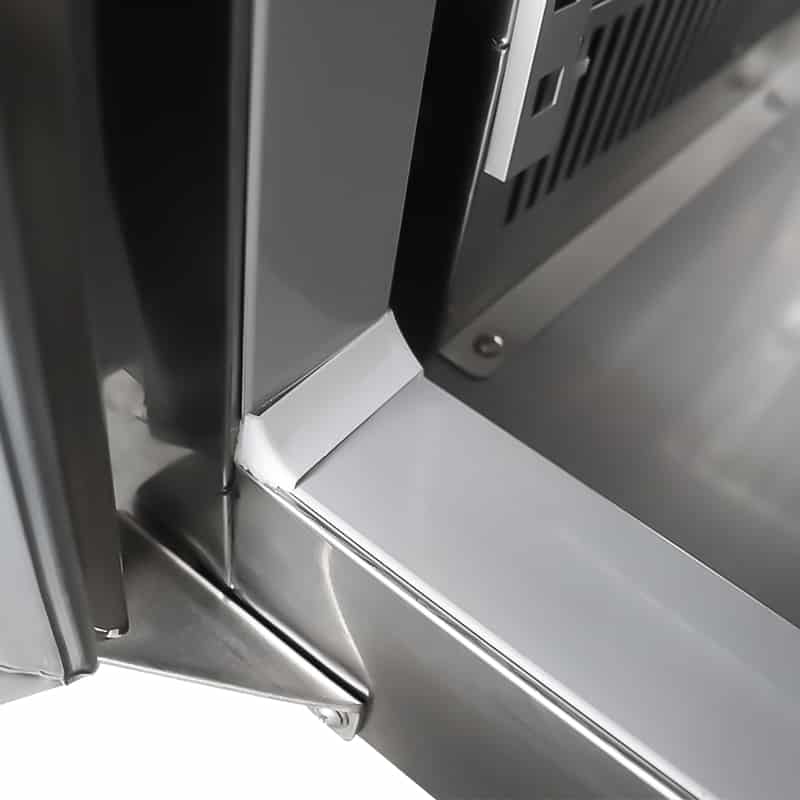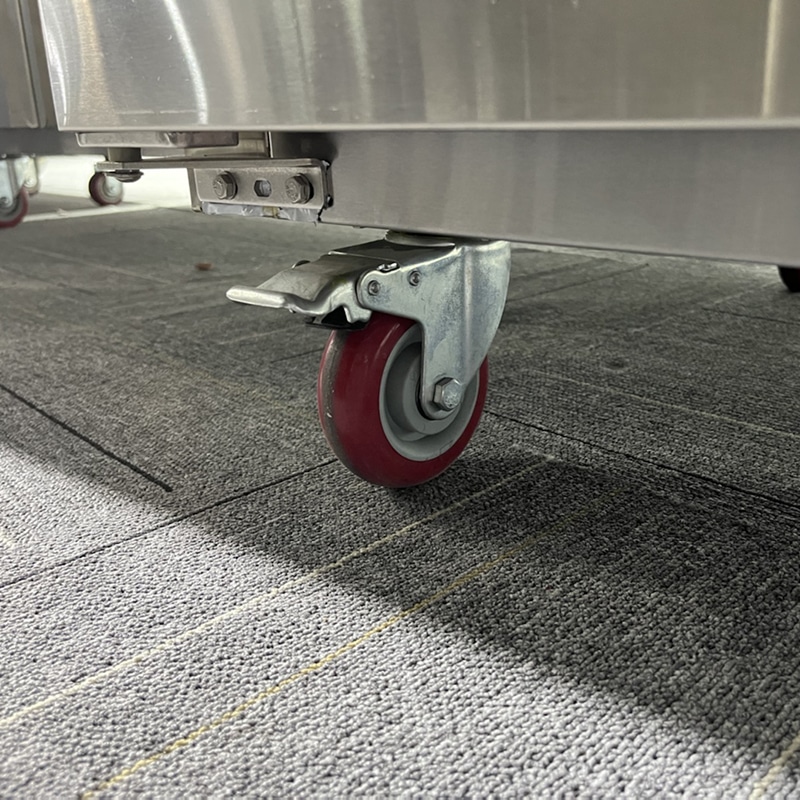How to Choose Salad and Pizza Prep Tables for Restaurant
Salad and pizza prep tables help cold food restaurants, quick service restaurants and casual dining restaurants assemble salads, sandwiches and pizzas at safe storage temperatures without having to frequently remove ingredients from the refrigerator or worry about exposing them to room temperature. These are two different things for different purposes, even though they look very similar in appearance. chefmax hopes this article will help you understand in detail the differences between the two and what to look for when buying one, and choose the most suitable refrigerated prep tables for your restaurant.
1. What is the difference between salad prep tables and pizza prep tables?
If you are familiar with refrigerated prep tables, you will find that salad and pizza prep tables are designed with recesses or plate rails on the refrigerated prep table surface that can accommodate multiple food plates. Like refrigerated prep tables, they both have refrigerated storage cabinet space and a workable counter top, and the differences are as follows.


A. Cutting Boards
Pizza preparation tables are larger overall, with wider cutting boards or work surfaces, which are designed to support the chef in placing different sized pizzas on them, and these boards are usually 40cm wide and above.
Sandwiches and salads do not require an overly wide cutting board, about 20cm is sufficient to hold standard plates.
B. Refrigerated counter tops
Pizza prep tables have a deeper refrigerated counter top, usually a raised plate rail that protrudes from the counter top and forms an angle with the table top for ergonomics.
The refrigerated space of the salad prep table where the food tray is stored is recessed into the countertop, and the food tray is not placed above the countertop.
C. Food tray size
Salad prep table use 1/6 trays and pizza prep table use 1/3 trays. Food trays for salad prep are smaller than those for pizza prep because more types of fresh vegetables and fruits are needed to make salads and sandwiches. This is the default, food trays can be customized to varying sizes.
2. What options should I consider when purchasing?
Refrigerated pizza prep tables can greatly improve the efficiency of assembling sandwiches and pizzas and reduce the number of operator runs, and there are more details to consider besides the most important refrigeration capacity and capability.
According to the actual situation of the kitchen:
A. Compressor position
There are 3 types of compressor positions for refrigerated worktops: side, under and rear. Compressors for salad and pizza prep table are usually rear and under. This requires your kitchen to allow enough space for the unit to draw in air and dissipate heat. This distance is usually 30cm or more. If the kitchen is compact and you have to put it in a tight spot, make sure this is the unit that dissipates heat from the front and bottom, not the sides and back.
In short, you only need to leave enough space around the cooling holes, in addition to another point, if it is a dry area and the use of flour pizzerias, bakeries, the air will produce more dust, this must be frequent cleaning of the equipment filters and regular cleaning of the refrigeration unit, otherwise it will lead to cooling problems, this will be more obvious in the use of flowing air to cool the preparation table.
B. What kind of food to store (refrigeration method)
Refrigerated pizza prep tables have three types of refrigeration, respectively, air-cooled, direct cooling and liquid refrigeration. Air cooling is the operation of the internal fan to produce convection of uniform cold air, direct cooling is the refrigeration pipeline directly and uniformly laid in the inner wall of the equipment, by the inner wall refrigeration, liquid refrigeration is less common, the same is embedded in the inner wall of the surrounding pipe, but the flow of the pipe is glycol or specially treated water to take away the heat for refrigeration.
The choice of what type of refrigeration in addition to price, but also according to the type of food stored to decide, condiments, bread, carrots, meat, etc. Suitable for all types, so the pizza preparation table for the type of refrigeration is not very demanding, just keep the refrigeration temperature at 0-5 ℃ can be safely stored.
For fragile leafy vegetables, the uneven direct cooling provided by the direct cooling model has the potential to freeze these ingredients with high water content (the temperature is very low near the inner wall), so the air-cooled model salad table can store all types of fresh vegetables very well. Liquid ducts can also provide uniform cooling, but are the most expensive.

C. Drawers or cabinets?
Refrigerated storage cabinets offer larger and more flexible storage space at the bottom, usually providing 2 height-adjustable shelves to hold items, suitable for batch stacking of ingredients that can be stacked, while drawers, although smaller in capacity, are more suitable for sorting finished processing of various ingredients, and for operators who want to replace or replenish food trays, they can quickly remove already prepared food trays from the drawers.
There are also devices that make the left and right sides into drawers and cabinets respectively, meeting both types of needs.
D. Capacity and food tray size
The capacity of the salad and pizza prep tables should be determined by the amount of storage needed. You don’t necessarily need a very large unit because some unprocessed ingredients can be stored in a vertical kitchen refrigerator as well. The most important thing about the preparation table is to reduce the running distance of the operator when assembling burgers, salads and pizzas. The volume of the various types of prep table storage cabinets ranges from 180-580L.
In addition to the overall capacity, the size of the food tray also needs to be noted. When purchasing a prep table merchants usually recommend the standard, such as 1/6 tray for salad food tray, or 1/3 for pizza food tray, if you need to customize, please refer to the following data, otherwise the recess is likely to be unable to place a tray that does not meet the specifications.
Standard food tray dimensions:
1/1pan 530×325 mm
1/2pan 325×265 mm
1/3pan 325×176 mm
1/4pan 265×162 mm
1/6pan 176×162 mm
2/3pan 355×325 mm
2/4pan 530×162 mm
1/9pan 176×108 mm
2/1pan 652×532 mm
E. Cover plate
Do you need ordinary stainless steel, acrylic cover, or insulated cover? Insulated lids have the same insulation as the inside of the freezer, they offer better thermal protection and better energy efficiency, while ordinary lids only hold heat for a short time, you need to transfer the food trays from the well to the refrigerator at the end of the business to prevent them from spoiling in unsuitable temperatures, a refrigerated prep tables with an insulated lid can eliminate this step.
If you need to place the preparation table in front of the restaurant, a model with a glass shield is a good choice. Customers can directly see the operator assembling the food, ensuring hygiene and safety while improving visibility.

For equipment requirements:
A. Material
Commercial salad and pizza prep tables are usually made of stainless steel, the interior material will be used to corrosion-resistant and easy to clean aluminum, the lid material will be used to light stainless steel and acrylic, or glass. For refrigeration systems, pure copper, iron and aluminum are used as piping, with copper piping being durable and long-lasting, and iron and aluminum being more susceptible to corrosion.
For prep tables with refrigerated storage cabinets at the bottom, each cabinet door provides one or two adjustable wire shelves. These may be stainless steel, but are often coated with enamel, PVC plastic or powder coating, with stainless steel being more durable and more expensive.
Regarding the insulation material, at least 60mm thick foamed polyurethane insulation is required to ensure thermal protection, below this value the unit will have poor insulation.

B. Defrost function
Air-cooled models do not frost or have very little frost means that frost does not form inside the storage space and on the surface of the ingredients, but the refrigeration system components still frost, while for direct-cooled models, the frost in both the storage space and the components needs to be cleaned regularly.
For units with automatic defrosting, the manual defrosting process is eliminated and the frost in the refrigeration components can be automatically removed after the unit has been operating for a period of time. There are two types of automatic defrost functions, one is a timed cycle, where a fixed time is set and turned on when the time is reached. The other is to detect the component temperature and automatically run the defrost function after sensing a temperature lower than the frost temperature.
C. Customized products
Refrigerated prep tables have a higher possibility of customization.
Regarding movement, the stainless steel support legs can be replaced with universal casters for easy movement during cleaning or transfer.
The foam door can be replaced with a glass door for increased visibility, with both swing and sliding options, which can be selected according to the kitchen space itself. Worktop tops can be customized with stainless steel, aluminum, marble or even wood panels. The number of doors, drawers and uncovered lids can be customized according to requirements.

3. Summary
Chefmax shares this guide to help you understand what to look for when choosing a salad and pizza prep tables, and you can trust our extensive manufacturing experience. If you need more professional information, please contact Chefmax by email or visit our refrigerated prep tables page where you will find high quality and cost effective equipment.

























